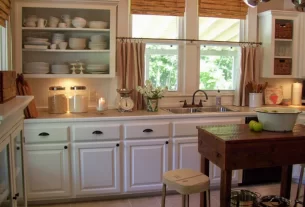When it comes to your outdoor furniture, there are a few things you should be keeping in mind when it comes to maintenance. You want to make sure that you are keeping your patio furniture clean and well protected. In addition, you also want to ensure that you are protecting your furniture from harmful elements like mildew.
Cleaning
Cleaning outdoor furniture is essential if you want your patio furniture to last a long time. You should also use the right cleaning method so that your investment is protected from the weather.
The best way to clean your outdoor furniture is to follow the manufacturer’s guidelines. This will ensure that your investment is protected and will allow you to enjoy it for years to come.
To clean a piece of outdoor furniture, you’ll need a hose, some type of cleaner, and a soft bristled scrub brush. If you’re not sure how to start, check with your owner’s manual or the company that you bought your furniture from.
In addition to cleaning your outdoor furniture, you’ll also need to store it properly. This will prevent it from fading and rusting.
The most obvious way to clean your furniture is to use soap and water. It is best to use a non-detergent liquid soap. For tougher stains, you can add white vinegar to your water.
Avoiding teak oils
It may seem like a good idea to use teak oil to keep outdoor furniture looking its best, but there are a number of reasons you should avoid using this product. Besides, the oil itself can actually harm your furniture.
Teak wood is a dense and durable wood that can easily withstand the elements. However, it will require a bit of care to preserve its natural look. You can prevent discoloration and mold growth by cleaning your furniture regularly.
If you choose to avoid oil, you can restore the teak’s natural golden brown color and keep it healthy and strong. Teak sealers also help protect your furniture from UV radiation and fungus. They can last longer than teak oil, but they do not require reapplication.
The most popular approach to caring for teak is to leave it to weather naturally. This will allow the wood to age and develop its own protective oils. But it can be difficult to maintain the wood’s beautiful appearance without oiling it.
Protecting from mildewing
If you have outdoor furniture, you need to take precautions in order to avoid mildewing. Mildew forms in damp or wet conditions. To prevent the growth of mildew, it is important to clean your furniture regularly.
Outdoor furnishings should be stored away from humid areas. When the furniture is in use, cover it with a towel. You may also want to stack your chairs or tie them to a tarp to ensure that you are not exposing them to excessive moisture.
Wood is a popular material for outdoor furnishings. But since wood is prone to mildew, you need to be careful when storing it.
For cushions, you can purchase covers that are made of breathable materials. However, they need to be fitted comfortably over each piece of furniture. They should also be sized to fit. Make sure to check for gaps in the cover. During the rainy season, you can also bring the furniture indoors.
Metal patio furniture
If you want to keep your metal patio furniture looking great, you need to know how to care for it. It is not hard to do. All you need is some basic cleaning methods and a soft cloth.
First, you must be careful when handling the furniture. Never use harsh chemicals. Instead, use non-detergent cleaners. You should also take extra care to ensure the surface is dry and clean.
To remove mildew, you need to wash off the area with a solution of water and bleach. Then, rinse thoroughly to make sure all the chemicals are gone.
Another maintenance tip is to check for scratches or rust. These can be removed easily with a little sanding. Once you have taken care of any stains, you can apply a touch-up paint to prevent future problems.
Metal outdoor furniture can last for years if you take proper care of it. Make sure you protect your furniture from seasonal damage and UV rays.





